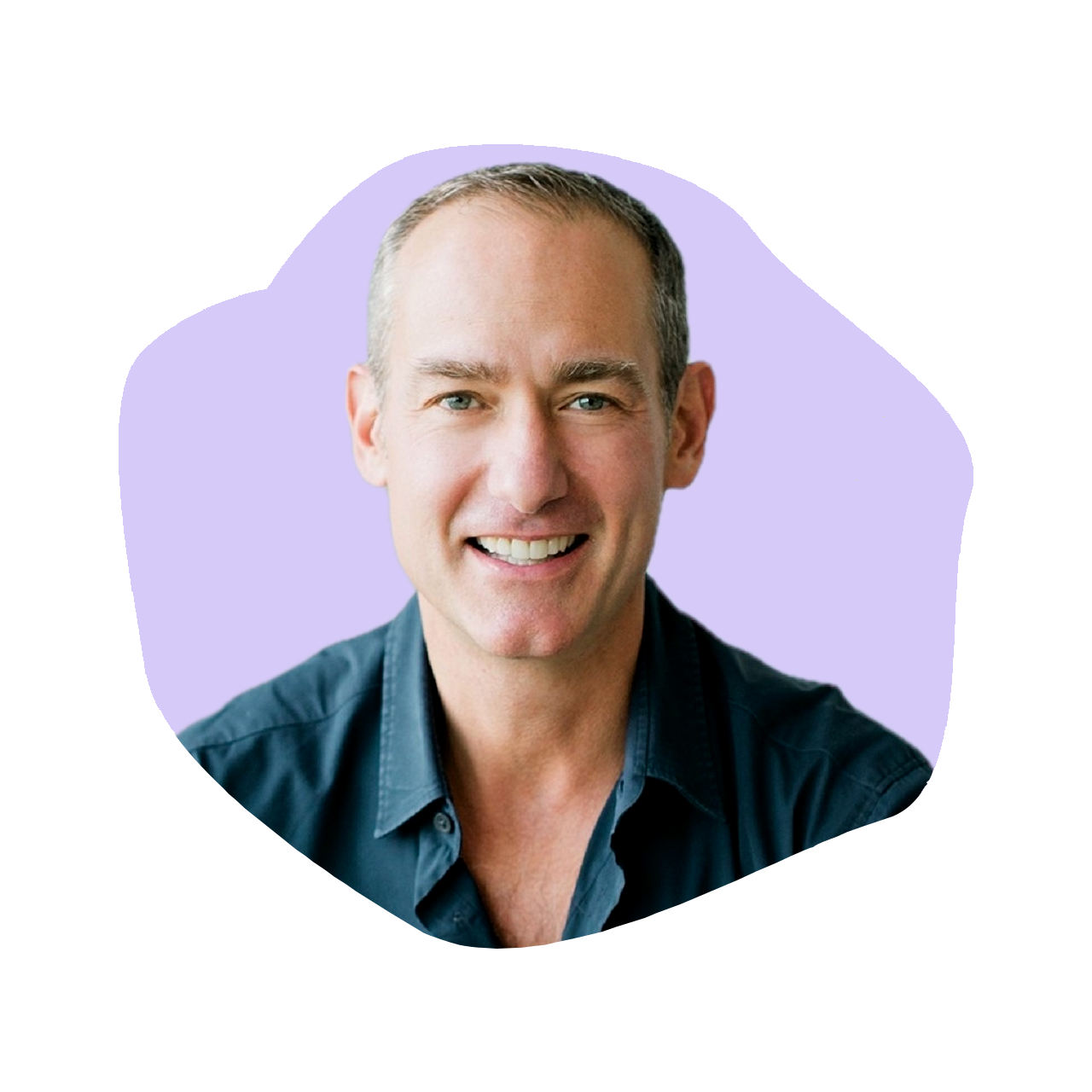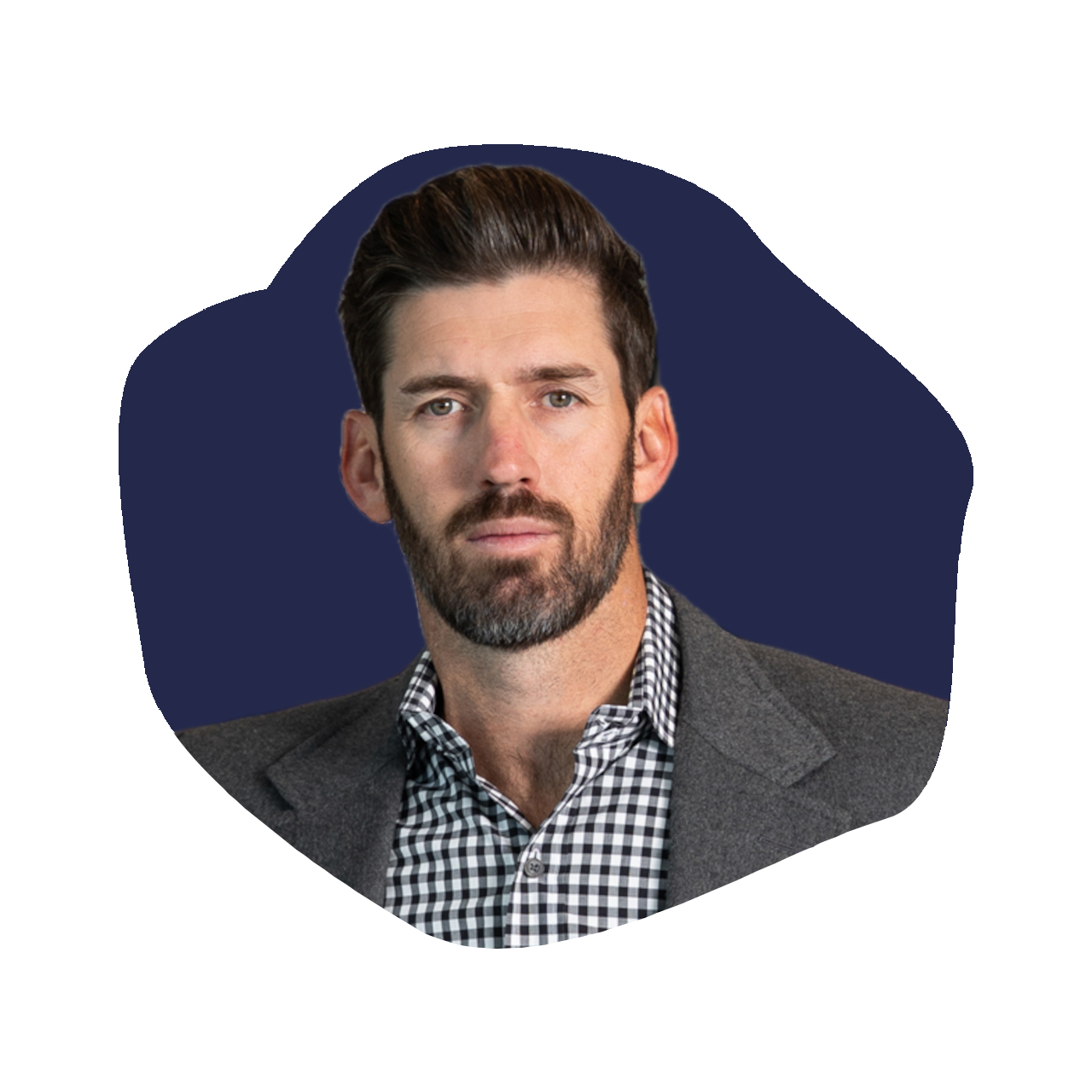Marian Leitner-Waldman: Co-Founder & CEO of Archer Roose Wines
Episode 539

Join us on this episode of The Kara Goldin Show, where Marian Leitner-Waldman, Co-Founder & CEO of Archer Roose Wines, unveils her journey to pioneering a unique position in the wine industry. Archer Roose stands for affordable luxury and sustainability, bringing globally-sourced, expertly crafted wines straight to your glass. Marian’s innovative fusion of traditional winemaking with modern sustainability practices captures the adventurous spirit of her brand. With a rich background that includes an Emmy-winning campaign featuring Elizabeth Banks and recognition from prestigious institutions like Wine Spectator, Marian is redefining wine enjoyment for today's consumer. She also shares invaluable insights for aspiring entrepreneurs on perseverance in business. Be sure to have your pen and paper ready—you won’t want to miss the enlightening stories and tips in this inspiring episode. Tune in now to #TheKaraGoldinShow.
Resources from
this episode:
Enjoying this episode of #TheKaraGoldinShow? Let Kara know by clicking on the links below and sending her a quick shout-out on social!
Follow Kara on LinkedIn – Instagram – X – Facebook – TikTok – YouTube – Threads
Have a question for Kara about one of our episodes? Reach out to Kara directly at [email protected]
To learn more about Marian Leitner-Waldman and Archer Roose wines:
https://www.linkedin.com/in/marianleitner/
https://www.linkedin.com/company/archer-roose/
https://www.instagram.com/archerroosewines/
https://archerroose.com/
Transcript
Kara Goldin 0:00
I’m unwilling to give up. But I will start over from scratch and many times I had to take to get where I wanted to get knocked out knocked out. So the only choice should be to focus on what you can control control control. Hi everyone and welcome to the Kara Goldin show. Join us each week for inspiring conversations with some of the world’s greatest leaders. We’ll talk with founders, entrepreneurs, CEOs, and really some of the most interesting people of our time. Can’t wait to get started. Let’s go. Hi, everyone. And welcome back to the Kara Goldin Show. Today, we have a truly inspiring guest joining us Marian Leitner-Waldman, who was the co founder and CEO of Archer Roose Wines. And you may have seen these wines if you’re on a JetBlue flight as I had first tried the products. So Marissa and her husband developed the product that together and back in 2015 2016 timeframe, the brand launched and it stands the forefront of the wine industry by offering affordable luxury wines that are consciously packaged and sourced from around the world. And we’re gonna get into all of what it takes to build a brand in the wine industry in the three tier system, as we’ve heard before. And also what is it like building a Emmy winning marketing campaign with Elizabeth Banks and accolades from Wine Spectator and beverage tasting Institute, so many incredible incredible wins. Definitely excited to hear a lot more about Archer Roose and their approach. So welcome, Marianne.
Marian Leitner-Waldman 0:59
Thanks so much, Kara, for having me. I’m
Kara Goldin 1:00
really thrilled to be here. Very, very excited to have you on today. So I’m very excited to meet the person behind this, this drink that I enjoy on my lights too. So you’ve done an excellent job and in the wine industry. And so how did you get interested in this industry? I guess starting with what were you doing before?
Marian Leitner-Waldman 1:12
Well, my story is kind of nonsensical in the sense that I kind of always love to build things. And my story actually starts when I was saying about in high school, I live for a year in Spain and actually live with a winemaker in his family. And I found the point. And from there, I always wanted to build businesses. And so I actually helped build a nonprofit, I was in high school. And then I went to college and built a nationally illustrated other magazine. And it was really one of those things I didn’t know they want to do when they grew up. And I was working in finance and at the World Bank. And that was all super fun and really fulfilling. But ultimately, where I always came back to wine, and what I loved was the way that this product had the ability to transport you around the world, but also connected to people stories in a unique way. And that kind of combination of being booths, but also being so intimate. When such an intimate partner that people create it. I kept coming back to it. And when I saw that with my husband, and I had actually been chased out of the Republic of Georgia, having built a white natural winery there. Again, like he said, a lot of our time talking about where was the industry broken? And why weren’t more young people drinking wine today. And we came up with this kind of hypothesis that was really rooted in one point, I was scary. There are so many different brands out there. And that’s largely because wines were marketed by variety and geography and not by you know, people’s values. So our kind of aha moment was alright, what if we actually built a brand, not product, but a brand that would unite all these winegrowing regions, knowing and offering consumers a kind of continuous experience built on quality, transparency and stability, when they do that every time they reach for a camp when they get a roof over dry, low intervention line. But the twist was in a perfect swing size. So you never had to debate yourself on whether or not you wanted one glass of wine, or whether or not you really only drink a whole bottle instead of being grateful for the packaging. So you could just have that glass of wine? Well, it’s the perfect size, right? So and it’s, it’s really terrific. So
Kara Goldin 2:34
how did you start, then you had a little bit of experience and not only consuming the product, I also experienced
Marian Leitner-Waldman 2:39
that naivete. But we had a sense of what not to do. But we started by first having a consumer insights, like what was really clear to us was at the wine industry and become very supplier driven and was a consumer driven. So how can we dive into better understand the end consumer? That was point one. And once we really understand who our target consumers were, we then build a lesson around how to build up a supply chain. How do we think about distribution? What do we want the brand to look like? And we like to say that we were big fans of chopping the wood in for them. So we just took it one by one. And we’re I would say we were different we continue to different is that we constantly ask ourselves, what’s not working today? And where does the arbitrage exists? How are the underserved consumers? We know that the whenever you think of the industry today, they think of collectors, right? They think of white male baby boomers as stock seller. But the reality is that 97% of the wine industry is built on daily wine drinkers. So how can we get to know them and serve them that better a glass of wine?
Kara Goldin 3:20
So what was the first step that you took that did you look at? We’re only gonna do white? Well, and what how many skews Did you launch with how did you think about this? Yeah, well,
Marian Leitner-Waldman 3:27
frankly, because we wanted to start impacting our first step was, how do we find winemakers who wanna partner with us? Is that even possible? So I was working at the bank at the time. And because I had a day job, we, we knew that we wanted to build a global portfolio. And that was because the data showed us that younger people were more interested in international wine as opposed to domestic, which is why historically, the wine industry have really been built off of. So we started, we focused on Argentina and Chile, which, because they were the same timezone. And that allowed us to start reaching out to people individually, we had with the people that wanted to meet, and we flew down to Chile, Argentina, and we couldn’t afford to go meet all of them. And we, a lot of them, were very skeptical of our product to begin with. The idea of dandelion back in 2014 was very scary to people. And but we finally got connected to one really exciting for what the individual, the Hutchinson, who was a Bordeaux trained Spanish red wine maker living in Chile, and he had been working for component A couple of really well established wineries. And he got exactly what we’re trying to do. And he completely agree with our vision of a more sustainable, more low dimensional company. And he really became kind of the backbone of our brand.
Kara Goldin 4:17
That’s incredible. So martial arts is known now for its commitment to sustainability. How do you ensure that like production practices, I mean, you’re sourcing from multiple wineries, but how do you ensure that the production practices meet these standards? Yeah, that’s a great question. So
Marian Leitner-Waldman 4:28
one of the things that we felt very strongly about was, there’s really two different social models in the wine industry, there’s go ahead and build winery in a rural area, or just go out and buy bulk wine. And it sort of challenges with both models. And when the traditional model, everybody thinks of the challenges that are kind of limited to the amount of skews that you bring to market because that relationship between geography and variety, the challenge with the book, my model is that you don’t have full transparency in the supply chain. So what we did was we knew from our previous experience in industry was that there’s a lot of underutilized capacity. And so we just had to do is go and find young winemakers like we did with Luca and Chile, convince him to join our project and then leverage actually the b2b nature of the wine industry to buy grapes directly from vineyards and then rent capacity in existing wineries. So we control the process end to end. And this was really important to us. Because parallel to this, we were doing research with university Cornell and artists around how wine actually performed innovative packaging, and what changes we could make in terms of interventions in the vineyard and in the cellar to make sure that when we weren’t putting any additional additives, or kind of junk into the wine, and two, we really were producing a replacement for and that’s fine embracing this new model, that gives us a lot of confidence about to do that. And as you know, we’ve been doing this now for eight years. And over time, we’ve gotten more sophisticated in terms of who we look to partner with, we look for, you know, solar powered vineyards, generally driving, who aren’t relying on irrigation, we are, you know, and then we ship our wine actually in 24,000, meter flexitanks, which means that we cut down on the carbon footprint of how we’re shipping our wine by almost 70%. And then bringing it to the US. And the reason why we put it in in two 50 million cans is not only because we believe that’s the perfect serving size, I like to call it a country club for but also because it aluminum is infinitely recyclable and 60% of all aluminum in United States is then recycled is the 1950s. And you contrast that with glass, which is not recyclable in those mentalities here in the US, it allowed us to really feel like we were bringing not only a high quality option consumers, but a truly sustainable one so that you can make your way looking to play.
Kara Goldin 5:54
So you and I were talking before we started recording about your distribution, and how you go through the three tier system, anybody’s listen to podcasts have heard about other spirits and wine and beer companies being a part of this system. But how has that been challenging? What have you learned along the way that maybe surprised you?
Marian Leitner-Waldman 6:08
Well, I’m gonna let the cutter on the amount of I can’t say that I’ve reached the limit of a lot of surprises. But well, I won’t bore your listeners since they said that they’re familiar with a three tiered system, which of course is a I mean, the system of disruption that’s existed, basically, since the end of prohibition. But what it means is that other than direct consumer, which is all three, but this, you know, we sell through our traders to bars, restaurants and retailers. And I would say that probably the first thing that surprised me was, how insular that community is, and and because of that, there is a lot of reinforcement of the same ideas of what sells what is the consumer wants. And there’s not a lot of asking the consumer themselves, because the way of collecting data is really tough. And so there’s a lot of dislocation between each step. And so frankly, like we get to moments we’re facing right now in the wine industry, where sales are down across the industry, and people are panicking. They’re asking, oh, my goodness, what’s the challenge? Like maybe, maybe we need to produce less wine? Instead of asking some saying, No, it’s because we don’t advertise to customers, like wine is 11% of the purchases in the call history. And yet we spend 5% of the advertising dollars, we are still kind of marketing to the same baby boomer consumer, as opposed to recognizing the fact that young consumers in the industry today is anybody 65 or younger, which frankly always makes me feel good and makes me feel young when I feel that statistic. But and those are the kinds of I would say prejudices that surprised me. And we are going to talk about the idea of learning again yet and what that means to people. But it I think there’s just this whole orientation towards the winemaker and supplier and the critic is God, as opposed to the end consumer is really who we need to be first.
Speaker 1 7:16
So when you look at the wine industry, what trends you see that kind of are affecting you overall. I mean, you talked about some of the challenges in the wine industry right now. But like, do you think when you talk to the consumer, what do you see as kind of the biggest trends that they’re seeing? Is it is it about packaging is about less alcohol? You know, is it about better quality? I
Marian Leitner-Waldman 7:30
mean, what what is it that you’re really hearing a ton about? Well, honestly, like I would have put it a high level of as the lifestyle has changed. And our whole approach or the way that we live, our lives have changed when we’re still seeking higher quality products overall from across CPG and pickling quality, we care about what we put in our bodies. And yes, people are consuming, what I would call it’s more thoughtful consumption, and consumption. And that comes from quality and also moderation. And I’d say that, like, there’s a lot of conversation and fear in the category today around the low alcohol or no alcohol movements or movement. But the reality is that, that kind of always adding to play just we’re talking about things more people are integrating into their lifestyle. But frankly, these are insights that have written articles from the very beginning, because fundamentally, the packaging site is all about having better control over your consumption, and allowing you to decide how much you wanna drink and whenever you want a drink. And so I’d say that moderation, and that is definitely a key piece. And the second key piece, and again, going down to this larger lifestyle umbrella is wearing how we’re drinking. It’s not in a white tablecloth on a date, like it is much more about fitting into the consumers day to day lifestyle. So are you hiking or you want to beach? Are you? Are you hanging out at a bar in a dog park? But believe it or not exists? Are you seeking experiences at a music venue or stadium and that’s where we want to show up. So it’s less about, hey, I want to get an aspirational lifestyle to you and wait for you to go to afford a company. Instead, we’re seeking the consumer actively in showing up where they are. So we’re at the dog park with the bar. They’re popping up all over. There’s one right here in Boston and right. It’s huge. Oh, my eyes are always hopping. It’s crazy. That’s insane.
Kara Goldin 8:39
So what are some of our services? Why it’s most popular items, and how do you decide which ones to create? Yeah,
Marian Leitner-Waldman 8:43
great question. So as I mentioned before, fine. Like our goal was really to create a unifying story around winemaking and explore the wine world knowing that always what you’re gonna get with us. And so that means that we really give you a chance to explore. We’ve got a Prosecco which we call a leaf from Trento, Italy, we’ve got a rose a from France, France, we have selling a platform costs about 50 a mile back from Argentina. And again, like what you’re seeing there is on trend varietals from highly marketable wine growing regions, because it’s truly about how, how can we connect the consumer better to this wine and make it easier and more approachable without sacrificing quality of story. And so what we do is we look at the data. And again, the data is really there’s no navel gazing, because if you look at Nielsen, it’ll say that like consumers only drink the same things like Cabernet, you know, Chardonnay, but the reality is, once you peel back that first layer and start to question around demographic, gender, and where in the country are bridal being consumed, you start to see a few things. One is that there’s a proliferation of skews, but those were idols, because that’s what Nielsen says. And because there’s a lot of talking to the end consumer, where people are constantly launching products in the category. So we went one step further, we’ve looked at partnered with drizzly and data is central and got a lot of consumer insights to directly ask the customers what they’re interested in. And what we found was that it was younger consumers and again, by younger, I’m defining this as 25 to 50 year old consumers, they were interested exploring an international portfolio that they were looking for lighter styles, so not a super heavy cap. And from there, we focus less on kind of the categories a little a little bit where the growth is coming from, and that was struggling, something on Blanc, Pinot Grigio Rosae. And so that’s really where we played and we built out our portfolio and it still surprises me somewhat like when we look at, you know, if you look at it from a disruption standpoint, probably is our most restrictive skew. Prosecco, which makes a lot of sense, right? People expect bubbles and cat, but our fastest growing or something and welcome back. And while that is very surprising to me, because red wine and I’ve always thought of as the most difficult sell, but what we’re seeing with our consumers is that as they stick around, and they see that we’re over delivering on quality for value, they’re, they trust us more, and our mold is unbelievably delicious. And so again, like just I think that plus a generational interest and red lines is really what’s driving the growth of that scale.
Kara Goldin 10:20
So how have you gotten the word out? And I guess, also, you talked about advertising a little bit, but as you start to think about your communities, and how do you build a brand and how you get people to recognize what you’re doing, and kind of a promise and the vision that you have? How have you been able to do that? Yeah,
Marian Leitner-Waldman 10:33
it’s a good question. So I this is really where I feel like anything apply for my business partner, Melissa. Thanks. So she’s a Hollywood superstar, director, producer. And of course, you know, we’re getting actress and she got involved with our tours during the pandemic, because she just totally thought we were trying to do and she was in a stage in her life where she was she wanted to have fun, she really wanted to connect over a glass of wine. But she also wanted control her consumption and wanted to be able to expand winemaking opportunities to fit within her lifestyle. And so we partner with her to create videos that really lean in on not that bucolic vineyards that you typically think of how wine is marketed, really put wine in your life. So folding laundry ticket, asking a candidate or person if we’re going to continue doing and we leverage these moments using humor in order to really break through, create something memorable, and then kick off a flywheel. So rather than actually drive people to retail, which is where a lot of people think that alternative mind really plays. We’ve really built this brand to be on premise. So we look for captive opportunities where we can drive trial. So we own the wine menu under blue, we play in Elizabeth Banks commercial during takeoff. And if even if later, flight attendants down the aisle, we show up at stadiums and music venues, and upscale basketball places with very limited wine options to really drive your attention towards our products. And then we lean into the communities surrounding those places. So we sponsor a lot of you know, we spend like with fantasy football club, which is plays in BMO, which is one of our pinions on La, we then have really leaned into the LGBTQ plus onto elite soccer leagues and sponsoring events in sponsoring our tournaments. And we do this on a local level across the country to really try to build a grassroots support, but also keep that current focus on who our customer is, and making sure that we’re showing up for them in different cases so
Kara Goldin 11:46
they can see us. Well, you guys are doing a terrific job. So and Elizabeth Banks is a terrific partner it sounds like and definitely she’s hysterical. So but it’s, it’s it’s a match made in heaven for sure. So So what advice would you offer to aspiring entrepreneurs who are thinking, wow, this is this is so cool. Well, what Marian is doing, and you know, thinking about an idea and figuring it out along the way, she didn’t come from the wine industry, maybe this is kind of like something that I want to be doing with my idea, go and build it. What would you say to that person? Just in terms of, you know, knowing what you know, today in building a company? Would you do it all again, would you would you? Do you think you know, it’s much harder than you ever thought and what are sort of your remarks, and more than anything just to get them inspired to to keep moving forward? Well, of course, it’s
Marian Leitner-Waldman 12:23
hard. It’s extremely hard. And there’s lot of naivete and grandiosity that go into, like pursuing your idea. But it’s also incredibly exciting. And it is, if you’re in a way that nothing else well. But all that being said, what my advice is, my advice is the following one, don’t quit your day job right away. There is a mythology out there that like you should go all in on your idea, if you believe in it. I worked in our careers outside of my desk for two years. And I didn’t quit until I had supply chain set up distribution setup. I closed my first investors. Yes, it’s hard, but like, you’re you’re gonna work on ours anyway, getting it off the ground, do it well, we still have health insurance. And there’s truly no shame in that. To me, that’s good recommendation, which is extremely important. My second piece of advice is build a to do list as simple as it sounds, and create page breaks or record like reality check breaks in that to do lists. And so as you talk about in front of you and make your way down that list, stop everyone’s answers. I’ll just say, so make sense, with the information that I know. And if the answer is yes, then keep going. And the answer is not the pursuit of an idea. iteration is we again, this is a dirty, dirty word. But it is the stuff of billion dollar companies. And so we need to be clear eyed about that. There are no sacred cows and your your idea is precious in your mind, but many you bring out to the world. It deserves to be sculpted accordingly in order to fit that needs of the market. And that’s, that’s half the fun. Ya know, I
Kara Goldin 13:19
couldn’t agree more. So it’s I love that you’ve taken on this challenge and you’ve created incredible product and brought us lots of inspiration for sure. So thank you so much for coming on. Marian Leitner-Waldman, co founder and CEO of Archer Roose Wines. So thank you again. And with all the info in the show notes. Everyone needs to try this product for sure. And thank you so much, Mary. And thanks again for listening to the Kara Goldin show. If you would, please give us a review and feel free to share this podcast with others who would benefit and of course, feel free to subscribe so you don’t miss a single episode of our podcast. Just a reminder that I can be found on all platforms at Kara Goldin. I would love to hear from you too. So feel free to DM me and if you want to hear more about my journey, I hope you will have a listen or pick up a copy of my Wall Street Journal best selling book on Donta where I share more about my journey including founding and building it. We are here every Monday, Wednesday and Friday. Thanks for listening and goodbye for now.
People Also Liked

752
Mark Rampolla: Author of An Entrepreneur’s Guide to Freedom and Founder of ZICO

751
Deborah Pagani: Founder of Deborah Pagani Beauty

750
Angela Caglia: Founder & CEO of Angela Caglia Skincare

749
Doss Cunningham: Chairman & CEO of Nutrabolt

748
Cheree Ashley: Founder & CEO of Osier




